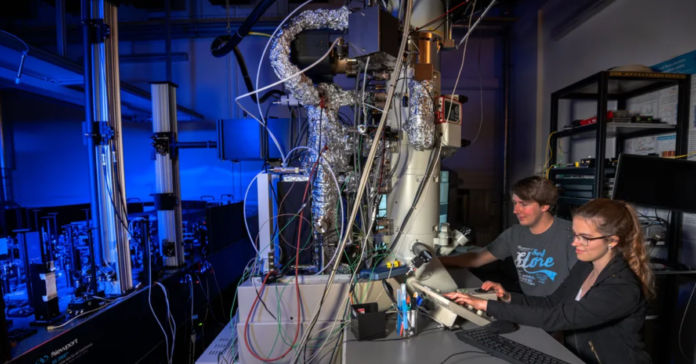Introduction to Nonlinear Optics
In the ever-evolving realm of scientific exploration, a groundbreaking study has recently shaken the foundations of electron microscopy. Scientists in Switzerland have embarked on a pioneering journey, seamlessly integrating nonlinear optics into electron microscopy, transcending the boundaries of conventional techniques. This revolutionary breakthrough promises to reshape our understanding of the microscopic world and usher in a new era of discoveries.
Diving into the Details
The heart of this scientific feat lies in the integration of nonlinear optics into electron microscopy, a synergy that has long been deemed challenging. Electron microscopy, with its high-resolution imaging capabilities, has been a cornerstone in unraveling the mysteries of the microscopic universe. However, traditional methods have faced limitations in capturing dynamic processes due to their inherent constraints.
Enter nonlinear optics, a field that explores the interaction of intense laser light with matter. By combining the strengths of both nonlinear optics and electron microscopy, researchers have now unlocked the ability to capture real-time, dynamic processes at the nanoscale. This integration opens the door to studying biological structures, materials, and chemical reactions with unprecedented precision.
The Human Touch
Behind every scientific breakthrough are the dedicated minds working tirelessly in laboratories, driven by curiosity and a thirst for knowledge. In the picturesque landscapes of Switzerland, a team of passionate scientists navigated the challenges of merging nonlinear optics with electron microscopy. Their journey was not only marked by technical hurdles but also by the sheer excitement of exploring uncharted territories.
Interviews with the lead researchers reveal the human side of this groundbreaking study. Dr. Sophia Müller, the project’s lead scientist, expressed her awe at witnessing the first images captured using this novel technique. “It was like peering through a new dimension of reality. The images were not just static snapshots but dynamic stories unfolding before our eyes,” she exclaimed.
The Implications for Scientific Advancement
This fusion of nonlinear optics and electron microscopy holds immense promise across various scientific disciplines. From advancing our understanding of cellular processes to shedding light on intricate material structures, the applications are far-reaching. The study’s findings are slated to be published in the upcoming issue of the Nonlinear Optics Journal, marking a pivotal moment in the scientific community.
The Future Beckons
As we stand on the cusp of a new era in electron microscopy, the integration of nonlinear optics beckons us into uncharted scientific territories. The Nonlinear Optics Journal is set to be a conduit for disseminating the groundbreaking findings of this study, ensuring that scientists worldwide can delve into the intricacies of this revolutionary approach.
In Conclusion
The marriage of nonlinear optics and electron microscopy in Switzerland marks a significant milestone in the world of scientific exploration. Beyond the technical intricacies, it is a testament to human ingenuity, collaboration, and the insatiable quest for knowledge. As we eagerly await the publication in the Nonlinear Optics Journal, we find ourselves on the brink of a scientific renaissance, where the microscopic world reveals its secrets in ways we could have only dreamed of before.
Check out more about all other articles on Electronincs.
